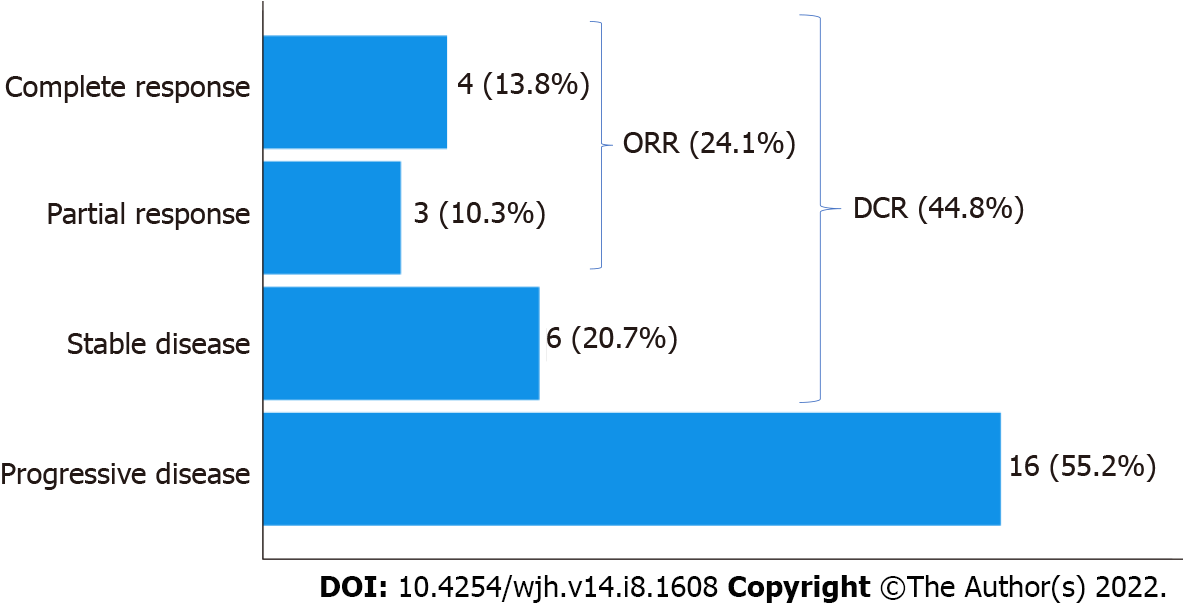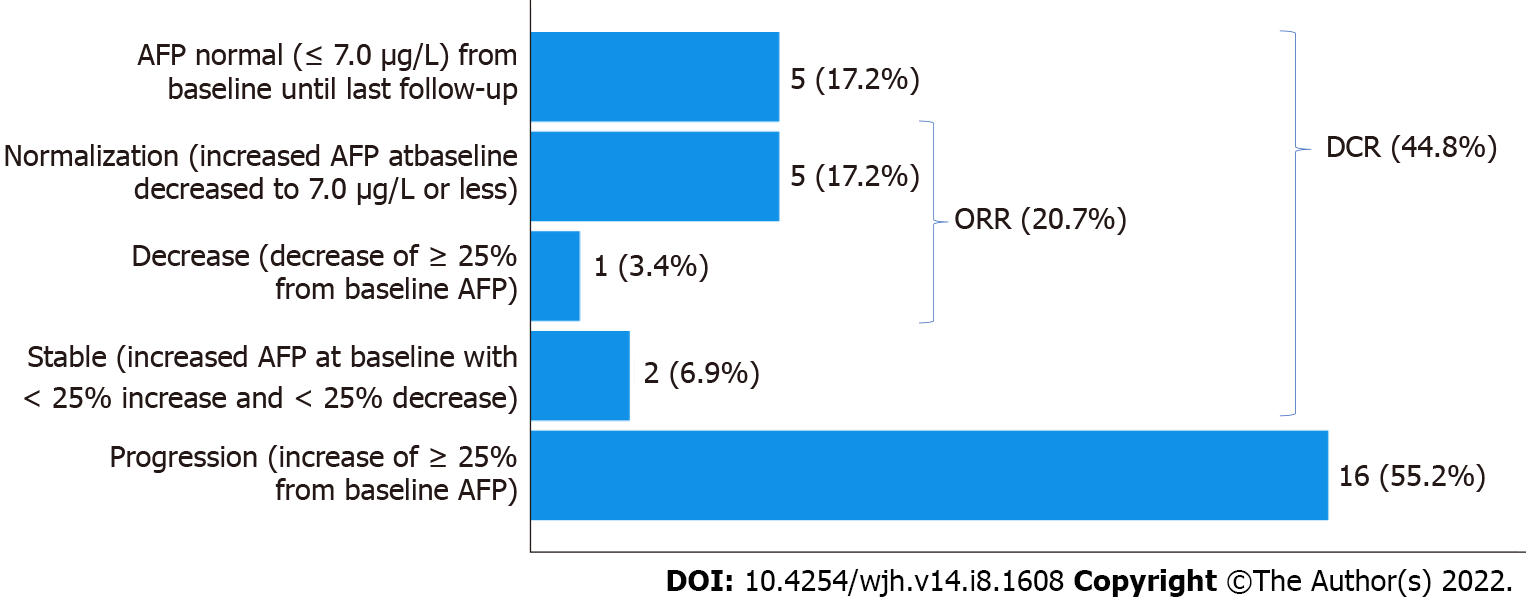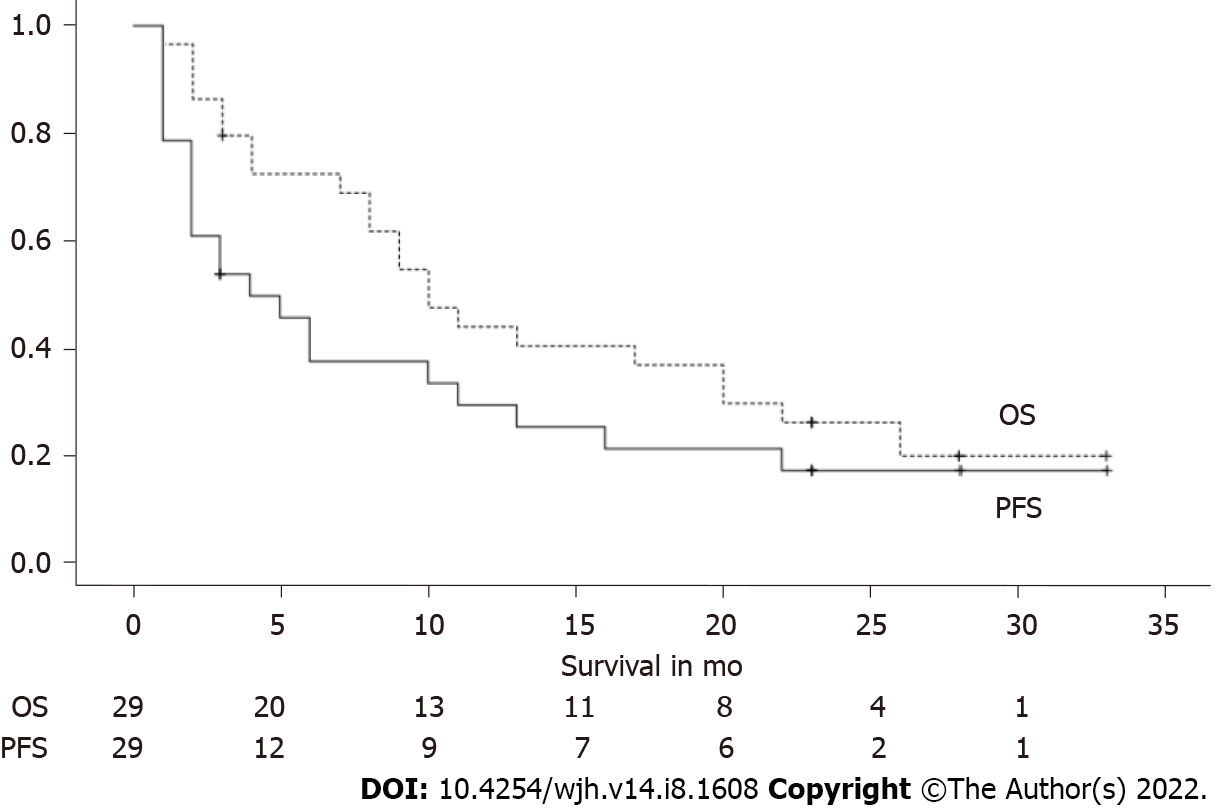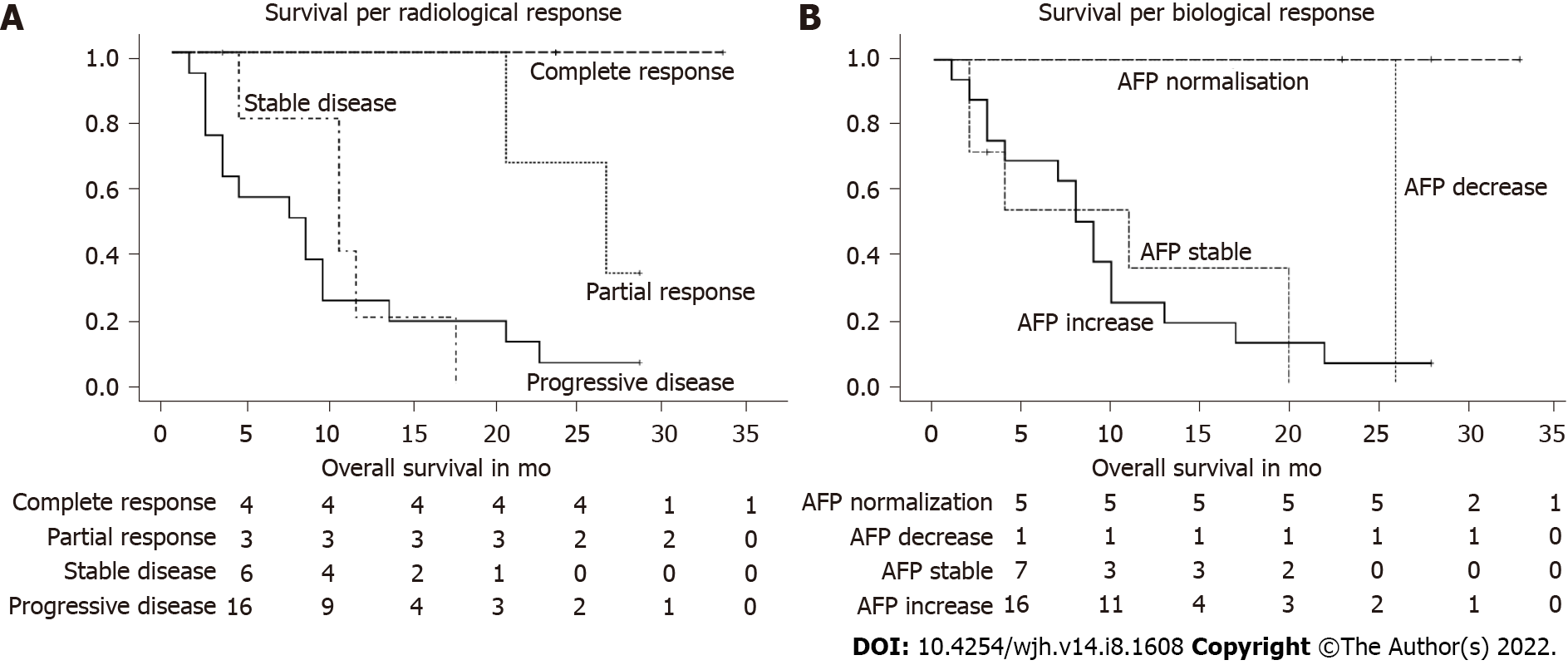Copyright
©The Author(s) 2022.
World J Hepatol. Aug 27, 2022; 14(8): 1608-1620
Published online Aug 27, 2022. doi: 10.4254/wjh.v14.i8.1608
Published online Aug 27, 2022. doi: 10.4254/wjh.v14.i8.1608
Figure 1 Radiological response categories by mRECIST and Irecist.
The figure shows the number (%) of patients per radiological response category. ORR: Overall response rate; DCR: Disease control rate.
Figure 2 Biological (alpha-fetoprotein) response categories.
The figure shows the number (%) of patients per biological response category. AFP: Alpha-fetoprotein; ORR: Overall response rate; DCR: Disease control rate.
Figure 3 Overall and progression-free survival.
The graph shows the Kaplan-Meier survival curves for overall and progression-free survival. Below the graph the number of patients still alive at that time is depicted. OS: Overall survival; PFS: Progression-free survival.
Figure 4 Survival per radiological and biological response.
A and B: The graph shows the Kaplan-Meier survival curves for each category of radiological (A) and biological (B) response. Below the graph the number of patients still alive at that time is depicted. AFP: Alpha-fetoprotein; AFP decrease: AFP decrease without normalization.
Figure 5 Evolution of the World Health Organization performance status after 2 mo and 4 mo of treatment, compared to baseline.
A and B: The figure shows the proportion of patients with an improved, a stable, and a worse World Health Organization performance status after 2 mo (A) and after 4 mo (B) compared to baseline. WHO PS: World Health Organisation performance status.
- Citation: De Wilde N, Vonghia L, Francque S, De Somer T, Bagdadi A, Staub E, Lambrechts J, Bucalau AM, Verset G, Van Steenkiste C. Real-life multi-center retrospective analysis on nivolumab in difficult-to-treat patients with advanced hepatocellular carcinoma. World J Hepatol 2022; 14(8): 1608-1620
- URL: https://www.wjgnet.com/1948-5182/full/v14/i8/1608.htm
- DOI: https://dx.doi.org/10.4254/wjh.v14.i8.1608

















